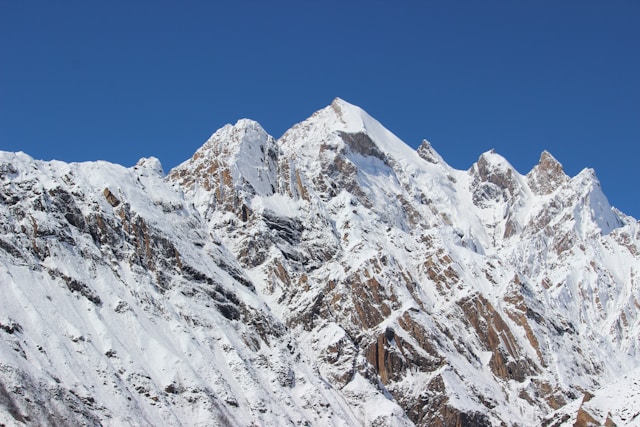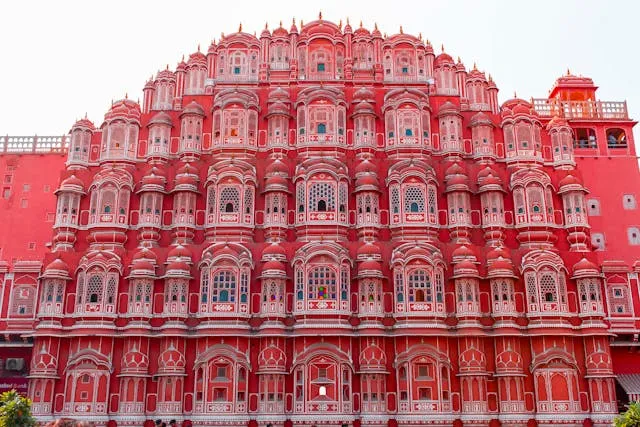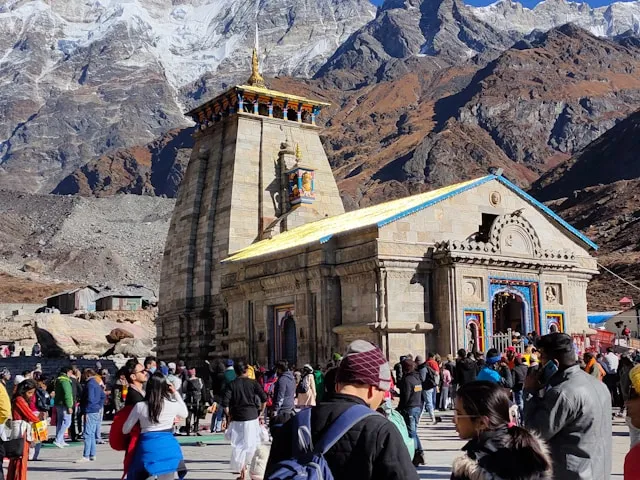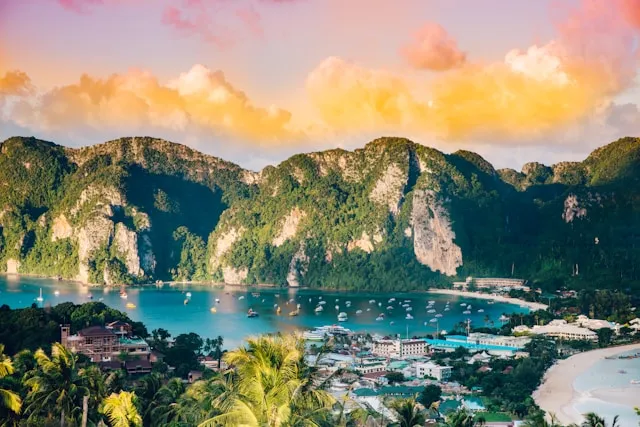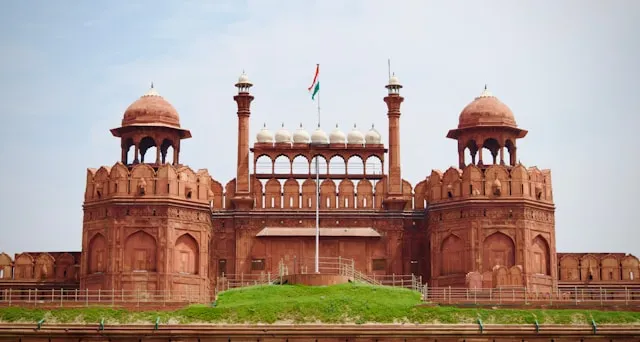Yamunotri Temple Travel Guide
Yamunotri Temple
About Yamunotri Temple Travel Guide
Destination Overview – Yamunotri Temple
Yamunotri Temple, located in the Uttarkashi district of Uttarakhand, is a sacred Hindu shrine dedicated to Goddess Yamuna, the personification of the Yamuna River. Situated at an altitude of approximately 3,291 meters in the Garhwal Himalayas, the temple is a vital part of the Char Dham pilgrimage circuit. Surrounded by snow-clad peaks and lush forests, Yamunotri Temple attracts thousands of devotees every year seeking spiritual solace and blessings. The temple’s serene environment and its location near the origin of the holy Yamuna River make it a revered and peaceful pilgrimage site.
Top Attractions & Places to Visit – Yamunotri Temple
Yamunotri Temple Shrine: The main temple dedicated to Goddess Yamuna.
Surya Kund: A natural hot spring nearby where pilgrims perform purification rituals.
Janki Chatti: The starting point for the trek to Yamunotri Temple, also known for its local eateries and shops.
Markandeya Tirth: A sacred spot associated with the sage Markandeya.
Dodital Lake: A pristine high-altitude lake located a few hours’ trek away.
Best Time to Visit – Yamunotri Temple
The temple remains open from late April to early November when the weather is suitable for travel. Heavy snowfall leads to closure during the winter months from November to April. The peak pilgrimage period is May to October, coinciding with pleasant weather and various religious festivals.
How to Reach – Yamunotri Temple
Air: The nearest airport is Jolly Grant Airport in Dehradun, about 210 km away.
Rail: Haridwar and Rishikesh are the closest major railway stations.
Road: Buses and taxis operate from Rishikesh, Haridwar, and Uttarkashi to Janki Chatti.
Trekking: The temple is accessible via a 13 km trek from Janki Chatti through scenic trails.
Accessibility for Differently-Abled Travelers – Yamunotri Temple
Due to the mountainous terrain and the trek required to reach the temple, accessibility is limited. Pilgrims with mobility challenges may find it difficult to complete the journey to the shrine.
Things to Do & Experiences – Yamunotri Temple
Participate in the morning and evening aarti at the temple.
Take a holy dip in the Surya Kund hot spring.
Trek through the scenic route from Janki Chatti to the temple.
Explore nearby spots like Markandeya Tirth and Dodital Lake.
Enjoy the tranquility and natural beauty of the Garhwal Himalayas.
Accommodation Options – Yamunotri Temple
Basic guesthouses, dharamshalas, and tents are available in Yamunotri and Janki Chatti. More comfortable lodging options can be found in Uttarkashi and other nearby towns. Advance booking is advisable during peak pilgrimage seasons.
Local Cuisine & Dining – Yamunotri Temple
Simple vegetarian meals catering to pilgrims are served at local eateries and dharamshalas. Popular dishes include traditional North Indian fare such as dal, rice, and vegetable preparations.
Travel Tips & Safety – Yamunotri Temple
Be prepared for the uphill trek with sturdy footwear and trekking sticks.
Carry warm clothing even during summer due to the high altitude.
Stay hydrated and carry essential medications.
Use authorized guides if unfamiliar with the route.
Respect temple customs and maintain cleanliness.
Weather Details & Packing Suggestions – Yamunotri Temple
Summer: Layered clothing for variable temperatures; woolens for cold nights.
Monsoon: Waterproof gear and caution for slippery trails.
Winter: Heavy woolens and thermal wear (temple closed).
General: Sunglasses, sunscreen, and comfortable trekking shoes recommended.
Currency Exchange & Banking Facilities – Yamunotri Temple
Limited banking and ATM facilities exist near Yamunotri. Carry sufficient cash when traveling from Uttarkashi or other towns.
Connectivity & SIM Card Info – Yamunotri Temple
Mobile network coverage is limited but better near Uttarkashi and Janki Chatti. Major telecom providers like Jio and Airtel offer some signal strength.
Itinerary Suggestions – Yamunotri Temple
1-Day: Trek to Yamunotri Temple from Janki Chatti and visit Surya Kund.
2-Days: Include nearby Markandeya Tirth and explore Janki Chatti.
3-Days: Combine the pilgrimage with a visit to Dodital Lake or nearby Uttarkashi.
Nearby Destinations to Explore – Yamunotri Temple
Janki Chatti: Gateway to Yamunotri with shops and eateries.
Markandeya Tirth: Sacred site associated with sage Markandeya.
Dodital Lake: A serene lake accessible by trekking, ideal for nature lovers.
Uttarkashi: A spiritual town with temples and natural attractions.
Shopping & Souvenirs – Yamunotri Temple
Pick up religious souvenirs such as prayer beads, incense, and local handicrafts from markets in Janki Chatti and Uttarkashi.
Cultural & Historical Background – Yamunotri Temple
Yamunotri Temple holds a vital place in Hindu mythology as the origin of the sacred Yamuna River, believed to cleanse sins and grant blessings. The temple’s rich history is entwined with legends of sages and deities, making it a spiritually significant pilgrimage site for centuries.
Best Transport Options – Yamunotri Temple
Buses, taxis, and shared vehicles run regularly to Janki Chatti, from where pilgrims trek to the temple. Walking is the primary mode of transport beyond Janki Chatti.
Nearest Railway Station – Yamunotri Temple
Haridwar and Rishikesh railway stations provide the closest rail connectivity to Yamunotri.
FAQs About Yamunotri Temple
When is Yamunotri Temple open for visitors?
From late April to early November.
How far is the trek to the temple?
Approximately 13 kilometers from Janki Chatti.
Are there accommodation options nearby?
Yes, basic guesthouses and dharamshalas are available.
Is the trek suitable for elderly pilgrims?
The trek is moderately strenuous and may be challenging for some elderly visitors.
What is the significance of Surya Kund?
It is a natural hot spring where pilgrims take a holy bath for purification.
Sustainability & Responsible Tourism – Yamunotri Temple
Visitors are encouraged to maintain cleanliness, avoid plastic use, and respect the fragile Himalayan environment to promote sustainable tourism. Supporting local businesses helps preserve the region’s cultural and ecological heritage.
Need a Yamunotri Temple Travel Guide Customized Itinerary?
Let us create your perfect Yamunotri Temple Travel Guide journey

Gallery

Weather
Location Map
Yamunotri Temple
Latest Blog Posts
Latest News: Yamunotri Temple – Sacred Shrine of Goddess Yamuna
What Our Travelers Say
Real experiences from our valued customers
"A visit to the Somnath temple was the highlight of my India trip. The experience was flawless, from start to finish."
Lily Johnson (Los Angeles, USA)
"I traveled to India for the first time, and the pilgrimage to the Golden Temple was breathtaking. A beautifully organized trip!"
John Matthews (London, UK)
"The spiritual energy in Rishikesh was incredible. The entire trip was perfectly arranged—couldn’t have asked for more."
Emily Thompson (New York, USA)
"The Rishikesh Ganga Aarti was magical. The team ensured the trip was perfectly planned, making it an unforgettable experience."
Thomas Lee (San Francisco, USA)
"I was amazed at how well-organized our visit to the Puri Jagannath temple was. A deeply spiritual and peaceful journey."
Rebecca White (Paris, France)
"Went to Rishikesh for a spiritual getaway. The arrangements were superb, and I felt so connected with the divine."

